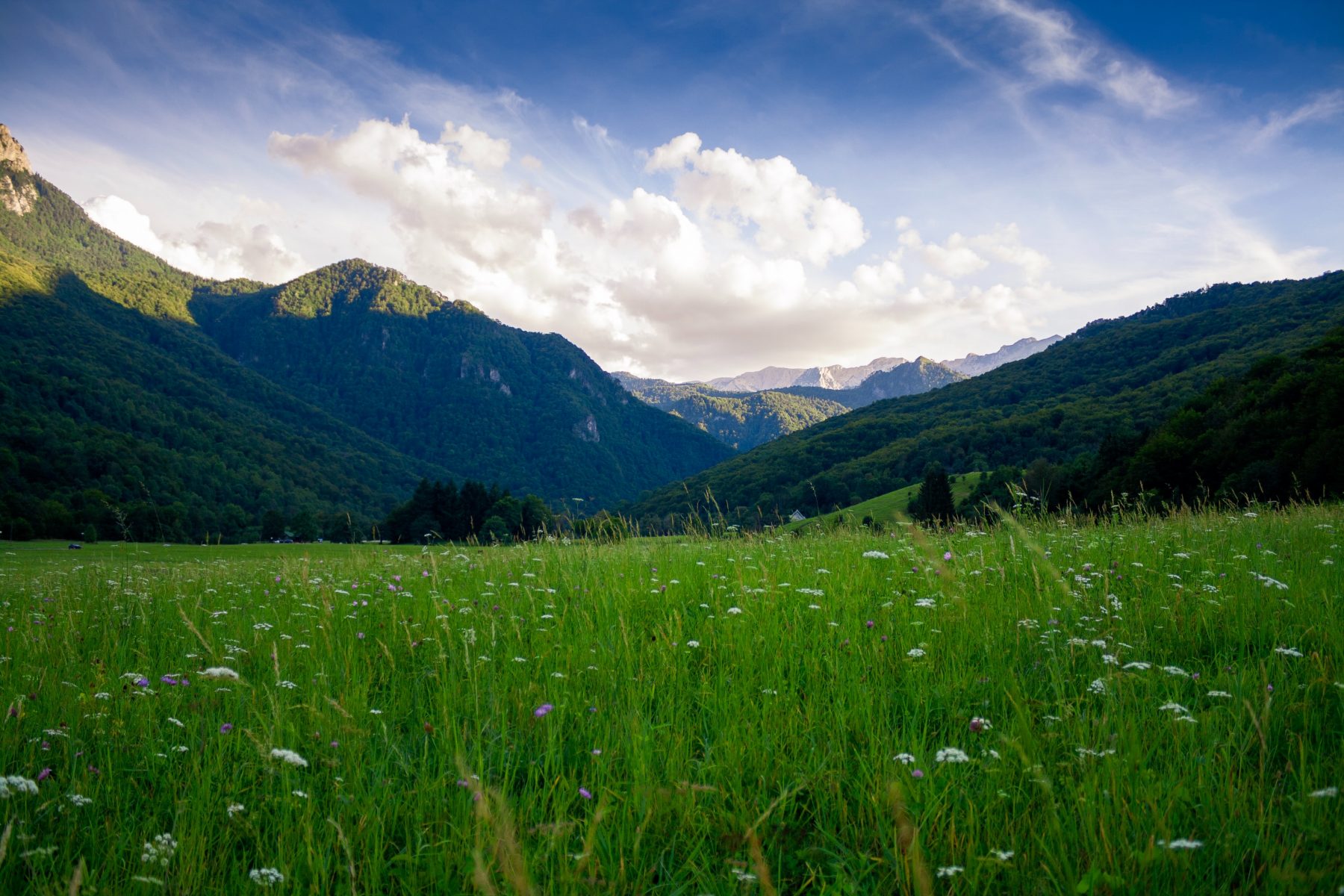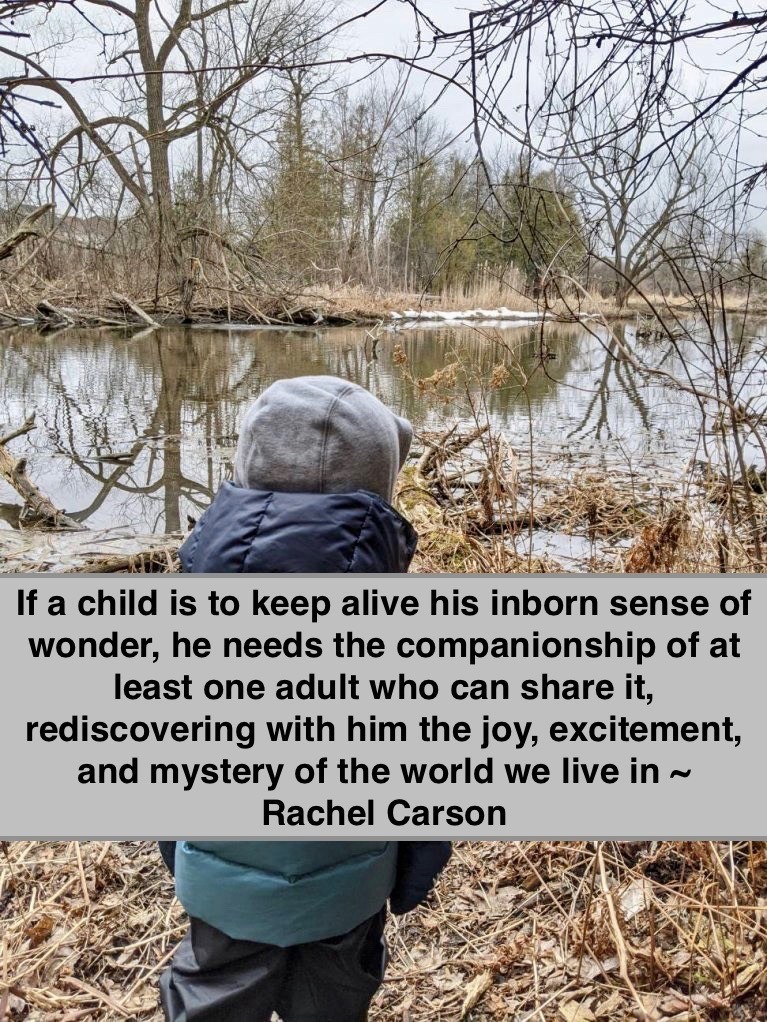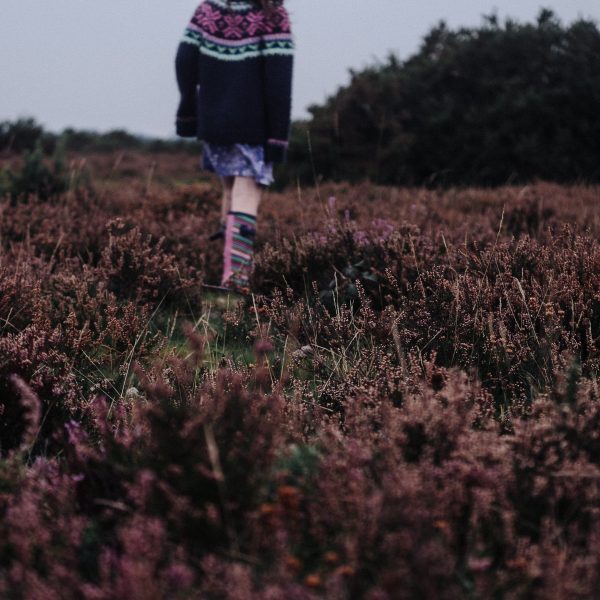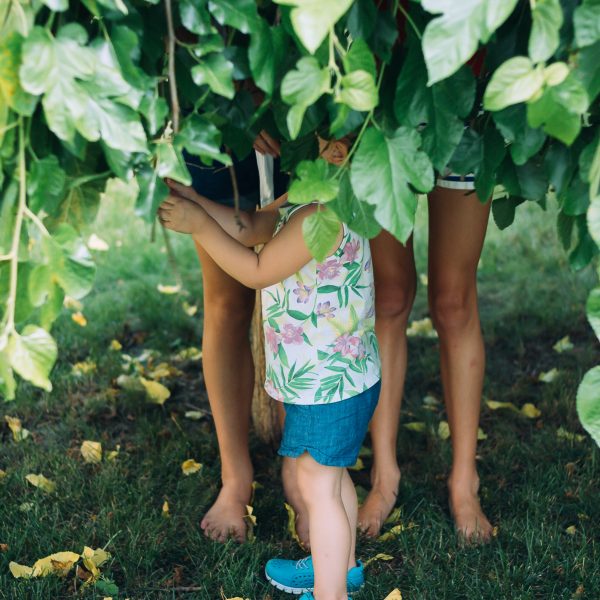Encouraging a Sense of Wonder while Keeping our Distance: This is the Time to Connect to Nature

During this global pandemic crisis, staying connected is a challenge. With so many of us being asked to socially isolate – to keep our distance, we look to new technologies to maintain relationships. In these uncertain times, it is more important than ever to stay connected.
I recently wrote a blog post, Early Childhood Education: Making Sense of our Life’s Course, where I referenced Mister Rogers, a personal hero, and expressed the importance of staying connected.
In times of stress, the best thing we can do for each other is to listen with our ears and our hearts and to be assured that our questions are just as important as our answers ~ Mister Rogers
Now, more than ever, I appreciate how social media has helped us stay connected. When so much is unclear, I am gratified to see educators supporting each other. We didn’t have this capacity during the 1918 influenza pandemic, but we have it now! Every day, I try to FaceTime with my granddaughter, Reese and my grandson, Griffen but it is not the same as holding a five-month hold in my arms or hugging a 3 and half-year-old. I am used to hosting family dinners every weekend and now we are separated and isolated. Nothing gives me more joy than playing with children, especially my own grandchildren!
It was just a few weeks ago, that I arranged to visit Griffen at the child care centre that he attends. Now, the centre is closed and he is at home. At least, I already feel connected to Griffen, his friends and teachers because they use Storypark but it is not the same as being there. Aside from our capacity to stay connected through screens, it can be difficult to see anything positive from our current circumstances. Yet, all we have to do is to go outside, where the sun is shining, and the wonder of nature surrounds us! We don’t have to socially distance ourselves from Mother Earth.
During the 1918 pandemic, sunlight and fresh air actually helped to heal and prevent infection. Research tells us that the outdoor air is a natural disinfectant. Take your children outside. Discover with them, the wonder that is nature. It will be good for them on so many levels.

Griffen is lucky, he lives close to a river, but you can find nature everywhere and anywhere by just stepping outside. Take out a magnifying glass and look closely at the grass growing from the crack in the sidewalk, notice the birds flying in the air and listen for their different songs and calls. Stop and examine a tree stump and look for the creatures that make it their home. With your child, find a stick. A stick is all you need! The stick is probably the world’s oldest toy.
In 2008, the stick was inducted in the Toy Hall of Fame because of all of its possibilities for play and learning. I am grateful for nature and that my son, Ben, for Griffen is that adult that Rachel Carson speaks about. I may not be getting learning stories sent through Storypark but I am still marvelling at the photos and videos, that Ben sends me.
Today, I will put together some wonder bags for Griffen. With all the loose parts and art supplies that I have in my basement that I use for workshops, just sitting there, I am thinking of a number of ideas to support Griffen’s sense of wonder with nature. I know for sure I will pack up some wool and ribbon for him to create a journey stick that will represent a memory of the time, that he and his Dad spent in nature during what I hope will be a once-in-a-lifetime event. When my grandson thinks back to this time, he won’t remember that it was difficult to get toilet paper. He will remember the joys of a stick! He will remember that he found it while he was playing outside.
Now is not the time, to worry about academics. Let us embrace this as a time for all of us to play and to be in nature – to develop our own sense of wonder.
I sincerely believe that for the child, and for the parent seeking to guide him, it is not half so important to know as to feel. If facts are the seeds that later produce knowledge and wisdom, then the emotions and the impressions of the senses are the fertile soil in which the seeds must grow.
The years of early childhood are the time to prepare the soil. Once the emotions have been aroused – a sense of the beautiful, the excitement of the new and unknown, a feeling of sympathy, pity, admiration or love – then we wish for knowledge about the object of our emotional response. Once found, it has lasting meaning.
“It is more important to pave the way for the child to want to know than to put him on a diet of facts he is not ready to assimilate ~ Rachel Carson, The Sense of Wonder”
This piece first appeared on Storypark’s blog, and has been shared here with permission. To access the original, follow this link.
Popular

Provider
Research
Workforce
New data reveals entrenched pay gaps for women from migrant and First Nations backgrounds
2025-11-04 08:15:17
by Fiona Alston

Provider
Workforce
Workplace compliance in focus: Fair Work Ombudsman report signals growing enforcement and support for employers
2025-10-29 11:08:01
by Fiona Alston

Practice
Provider
Quality
Workforce
National winners announced in 2025 Excellence in Family Day Care Awards
2025-11-04 07:30:38
by Fiona Alston













